
Image from Canva
In this article:
It’s easy to get overwhelmed planning your home’s decorating strategy. Between scrolling real estate listings for inspiration and Pinning your favorite color palettes and sofas, you’ll start to feel the pressure to decorate everything just right—which of course, is a no-win situation. Even the most influential decorators and designers agree that decorating your house is a lot of trial and error with plenty of tweaks along the way.
For everyday decorators, it's best to work from room to room and tackle each project as your time and budget allow. Once you learn a few basic terms and design principles, you’ll be on your way to creating the home you’ve built Pinterest boards around.
How to Get Started Decorating
1) Define Your Decorating Preferences
To help you start decorating, it’s a good idea to define a few qualities of your decor and design preferences. You probably know what you like, but might not know exactly what to call it. Most people prefer a couple of aesthetics and want to add pops of other styles, especially if you’ve lived OCONUS or have a passion for travel.
To help you recognize and name what you like, check out Houzz’s blog for good examples of the most popular decorating styles.
- Transitional
- Coastal
- Farmhouse
- Traditional
- Rustic
- Coastal
- Mediterranean
- Contemporary
- Modern
- Scandinavian
- Industrial
- Midcentury
Learn more: Beginner's Guide to Home Style and Architecture.
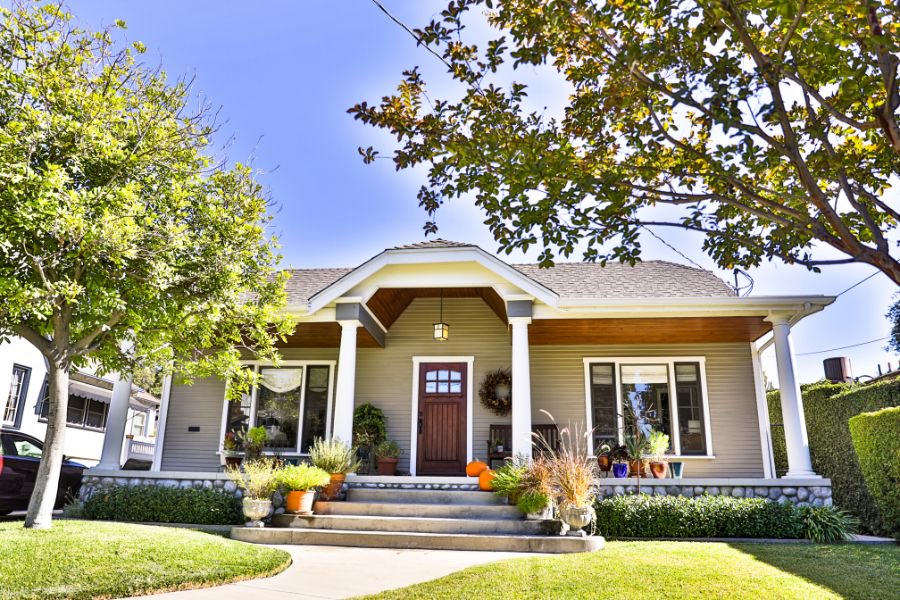
Image from Canva
2) Define Your Decorating Needs and Wants
To start your decorating journey and make wise investment purchases, ask yourself these home style questions to find the decorating elements you prefer.
What are my priorities?
Frame your priorities against the picture of your lifestyle. For example, does all furniture need washable slipcovers or stain-resistant fabric? Or, is high quality, durable, and scrubbable paint your preference?
What is my budget?
It’s so easy to bust a decorating budget. But planning the numbers gives you the reality check you need. A budget allows you to splurge on your must-have items and pushes you to shop around for the “nice-to-have” options.
How will my family use the room?
If you’ve always dreamt of an antique china cabinet to show off your heirlooms in your dining room but currently use the space for homeschooling and science experiments, it might not be the right time to invest in an expensive piece.
How can I work with what I have? Or, what items must stay?
Your budget helps you decide what stays and what goes, but you can use your decorator’s eye to reimagine your belongings in a new way. Will a coat of paint upgrade the chest of drawers? Can you hire someone to restuff sofa cushions and sew a slipcover?
How much time do I have to invest? Or, what is my devotion to the process?
Life is busy—especially military life. If you love and appreciate a pulled-together home worthy of a magazine spread but don’t care to curate the look yourself, it's time to consider hiring professionals to get the look you want. You’ll save yourself time, frustration, and possibly money.
After learning about decorating styles and defining your priorities, you’ll now have the information you need to start decorating each room. Keep in mind that general design concepts like scale and proportion and color science are transferable to each room of the house.
Decorating Your Living Room
Your living room is probably second only to the bedroom as the space in your home where the most time is spent. Because we spend so much time in these spaces, it’s important to find a style that makes sense for everyday use.
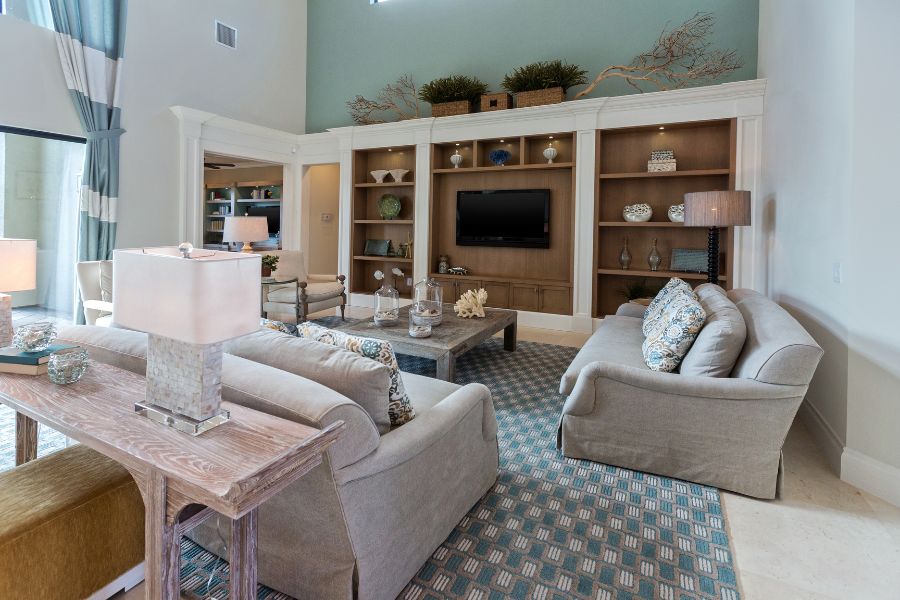
Image from Canva
Floor Space
The living room is likely one of the largest spaces in your home, which is good and bad. The size means bold prints and colors can work well and oversized furniture fits nicely, but the space will fill quickly. Many people have trouble calculating the dimensions of floor space and the furniture it will hold.
Pottery Barn and Room Sketcher both offer very easy-to-use room planners. Plugging in the room's dimensions or using their standard dimensions helps you visualize the space and how the furniture fits. Using these planners helps avoid buying a couch that eats too much space or purchasing a settee dwarfed by 12-foot ceilings.
Scale and Proportion
Learning scale and proportion is tricky for some home decorators because it takes practice to visualize. They’re the concepts that make your room feel pulled together and inviting. Think of a time when you moved into a new home, and the couch was too oversized for the space and blocked foot traffic. Or when you moved into base housing and your furniture became teeny tiny sitting under 12-foot ceilings. Their scale and proportion were off.
Creating scale and proportion in a room requires harmony among these room characteristics:
- Size
- Furnishings
- Height
- White space
- Patterns
- Repetition
More tips for finding your living room style:
- Consider outdoor fabric on custom chairs and couches for easy clean-up. The feel and texture have improved in recent years. Now they’re durable and comfortable.
- Buy slipcovered sofas and couches. With dogs and kids, the option to launder (maybe in your machine, depending on size) is so much better than spot cleaning every day.
- If you're having trouble with high ceilings making your furniture appear small, invest in a room-size, heavily patterned rug. The design will draw the eye down from the soaring ceilings.
Get 8 Tips for Decorating Awkward Spaces.
Your Kitchen Decor
There's a good chance your family is spending a lot of time in the kitchen (especially if it’s an open concept kitchen). While functionally takes center stage, there are ways to add a little personality to a utilitarian space.

Image from Canva
Start with these options if you want to add a little farmhouse, boho chic, or whatever decorating style you prefer.
- Update the overhead lighting and turn pendant lamps and chandeliers into the kitchen’s focal point.
- Paint the kitchen a dominant color like green or blue.
- Or, to add color and keep white walls, paint the cabinets a bold color.
- Upgrade your kitchen linens. Not just hand towels, but seat cushions and rugs.
- Display your favorite collection of serveware or dishes on open shelving.
- Make a statement with colorful bar or counter stools.
- Try removable backsplash tiles for a different kitchen view.
Transform Your Bathroom
Of all the rooms, bathrooms have transformed the most over recent years. Once a place for necessary functions, bathrooms have become a place to linger and relax.
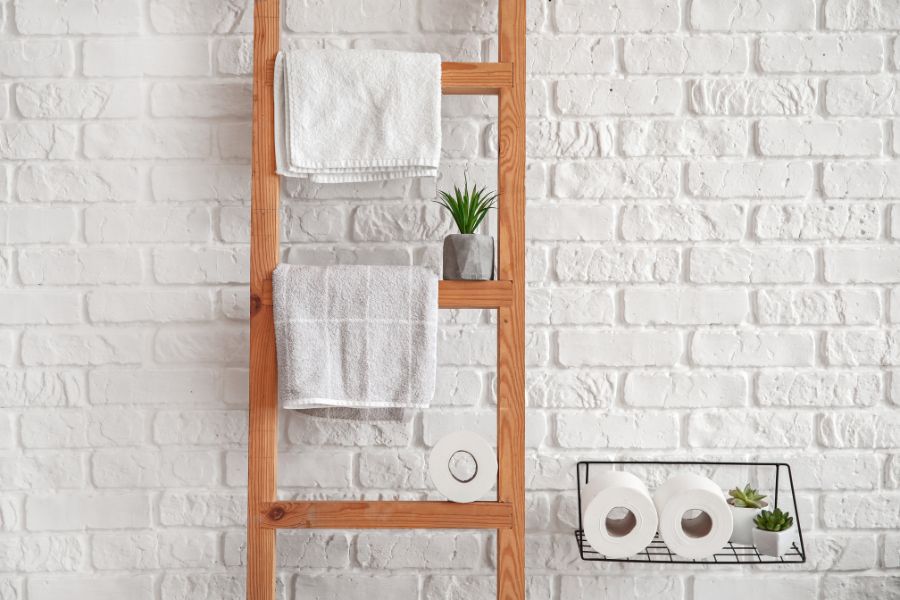
Image from Canva
After giant tubs and cavernous walk-in showers took over, decorating the space to highlight their features was the next obvious step. Here’s how you can amp up your bathroom and make it appear larger.
- Add strategic lighting to enlarge the space visually.
- Use the same finishes on fixtures (brushed nickel, brass) throughout the room. It unifies rather than distracts or breaks up the view.
- Bring in modular storage units or ladders to hang towels and optimize vertical space.
- Apply the same flooring throughout the bathroom, even into the shower if it's a walk-in.
- Oval-shaped mirrors elongate small areas over vanities.
- To make the room appear larger, use one color for the wall and paint trim. One paint color removes break lines in your line of vision.
- Although white is a go-to choice for color, greens, blues, and grays also make small spaces appear larger.Reduce the need for a large vanity by adding shelves for towels and bath accessories.
Need more inspiration? Read Easy DIY Kitchen and Bathroom Updates.
Your Bedroom Decorating Style
If you need a decorating style update in the bedroom, start with color. It’s the easiest way to begin, and it makes a huge impact on your perception of the space.

Image from Canva
The Science of Color
Did you know there is an entire science dedicated to color? Part chemistry, physics, biology, mathematics, and psychology, color scientists research its effects, and their findings later translate across many design fields such as fashion and interior design.
The color you pick for the bedroom is probably one of the more thoughtful choices you’ll make decorating your house. It’s a personal choice that can provoke calm and serenity or energy and vitality. So take the time to watch how paint samples on the wall change over the daylight into evening hours; the difference could change your mind from gray-green to blue-green paint.
Soothing and Comforting Colors
- Pinks calm and soothe the mind while relaxing muscles. That’s why, in addition to a salmon hue in adult bedrooms, pink can be helpful in kids' bedrooms, too.
- Shades of blue are the majority’s favorite color because of their relaxing relationship with water.
- Greens are calming, reminiscent of new beginnings and Mother Nature. They also have anti-anxiety properties.
Vibrant and Energetic Colors
- Red is vibrant, energetic, and passionate. The color gives off lots of energy.
- Yellows are cheery and can stimulate your memory.
- An orange hue is one of the least used in a bedroom because it’s known to reduce fatigue symptoms.
Remember, color science doesn’t always match your preferences. Your love for orange might outweigh any biological effects on your mind and not bother you at all.
Don't Neglect Spare Room Decor
What to do with a spare room? Most people use it for a guest room or home office, and some split the difference and make it a combo. But there are other choices, like a hobby, play, or homework room. Just make sure the spare room doesn’t become the closet/junk/dumping ground.
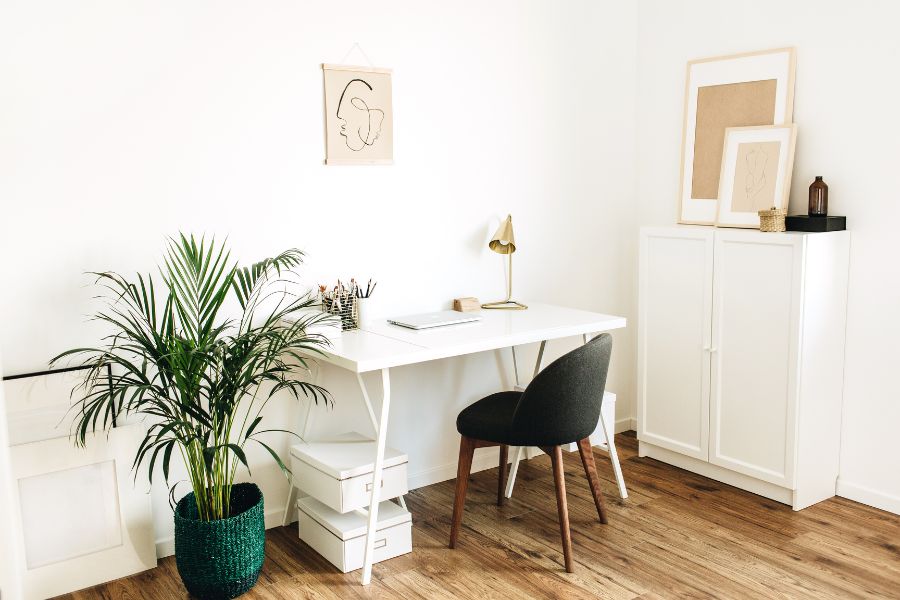
Image from Canva
An easy way for a spare room to serve two purposes is for the backdrop to be neutral, especially if you plan to sell your house in the future. Variations of gray, beige, and even some blues for wall color allow decorative layering appropriate for an office/guest room. Neutral paint becomes a money saver when owners feel the urge to change up the room's look with accessories only.
Rugs, window treatments, and other accessories can tell a color story that is adjustable on a whim. Office furniture is more than black and grey metal these days, so look into painted file cabinets, a beautifully upholstered office chair, and desktop accessories with vibrant prints to match the color choices in the room.
If you’re stuck on how to start adding decorative elements to a spare room, use the rest of the house as inspiration and pull themes from other spaces in the home. There’s likely a repeating color or pattern you’re drawn to. Add those details to the spare room for a cohesive look and personality that is all yours.
Outdoor Living
If you’re lucky enough to have usable outdoor space, take advantage of the square footage and add the extra living area into your everyday life. But, first, you have to decide how you’ll build your outside space; it usually happens one of two ways.
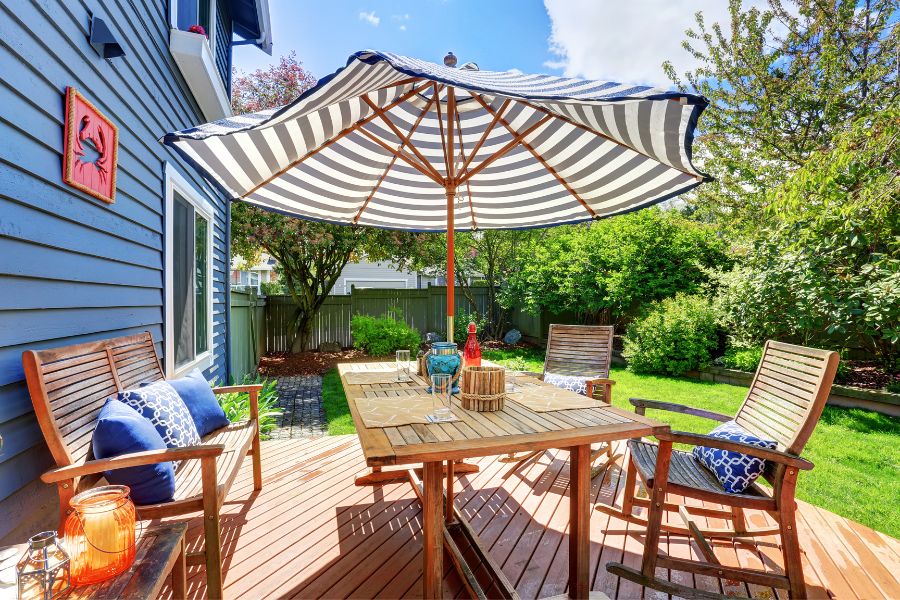
Image from Canva
1) Expand your current interior rooms by adding doors or removing walls.
The goal is to make the flow between inside and outside as seamless as possible, by extending an existing space, such as the living room or kitchen, into the attached yard.
2) Your home's footprint might make it easier to maintain a separate and obvious space from the inside room leading outside.
Although an easy pass-through like French doors may lead out onto the patio, the styling outside is very different. An atmosphere transformation occurs as you leave the main house.
When decorating your outdoor “room,” the sky's the limit! Depending on your primary use, such as a meditation platform or lively entertaining space, use bold or neutral colors, add simple or sophisticated furniture, plenty of lighting, and definitely incorporate potted plants and flowers. A small cooking garden ensures fresh basil for pasta meals, and cilantro spices up Taco Tuesday.
Decorating your home should be an enjoyable experience, so there are no hard and fast rules, especially because military life requires frequent moves. Cherish the items you love and use them in your home decorating. But to keep your style fresh, always keep an eye out for ways to change up, improve, update, and upgrade some furniture or decorative pieces.
By Dawn M. Smith
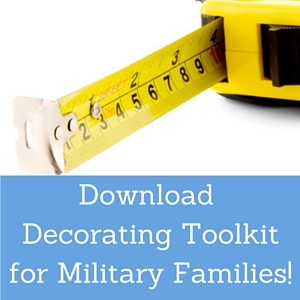
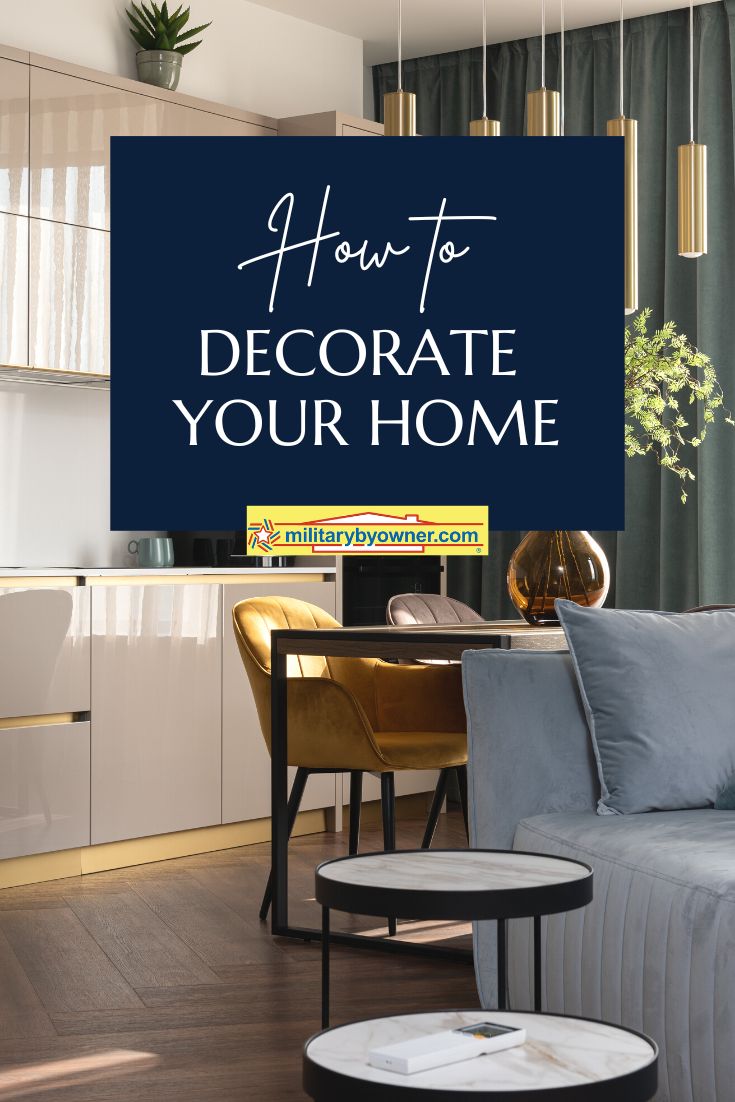
back to top